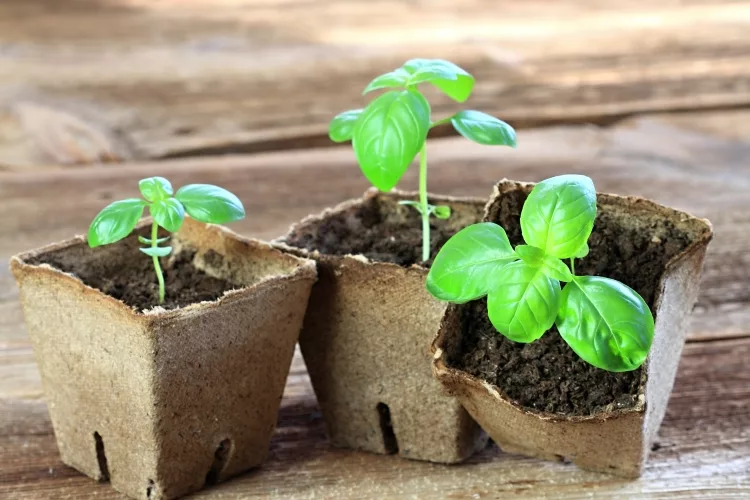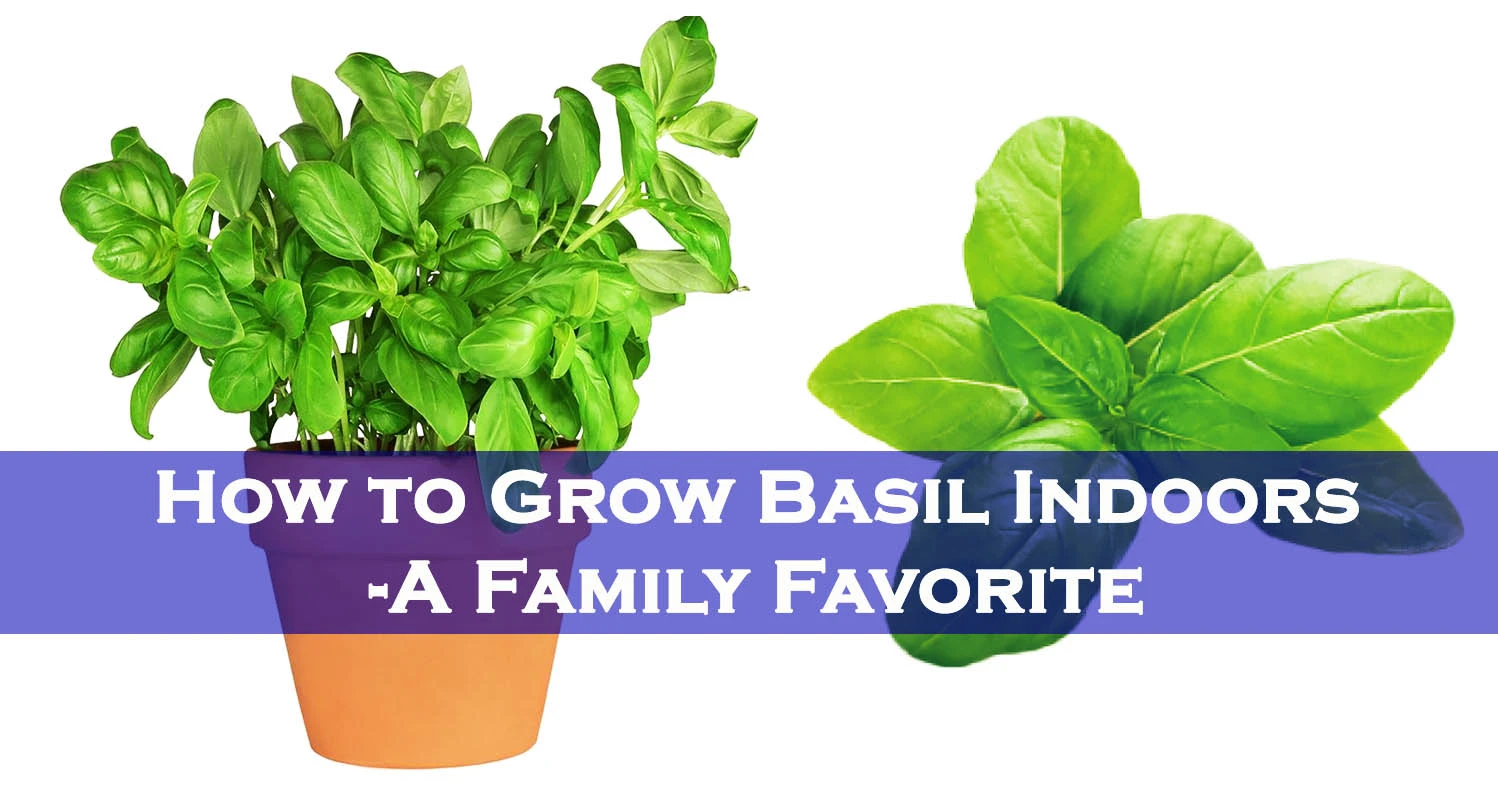reviewed by Christina Lopez
It is easy to learn how to grow basil indoors as long as you meet its raw water, temperature, and light requirements. Basil has a fast germination time and is very quick to produce.
One of my and my family’s favorite herbs has to be Basil. This fast-growing herb is a workhorse in the kitchen flavoring department, with its many varieties available. Basil’s flavorful leaves can be used raw or cooked, from salads, soups, and sauces to teas, sandwiches, oils, and seasoned butter.
As a warm-weather plant, basil needs a minimum of 6 hours of light a day and room temperatures of 65 to 80 degrees Fahrenheit. You can use grow lights to supplement when enough natural light is not present.
Contents

Soil temperatures are essential when basil seeds germinate, so I highly recommend starting basil in seedling trays with a seed starting soil or pre-made soil pellets. These will be easier to keep warm by using a seedling heat mat than the larger permanent pot.
Basil seeds are tiny black seeds that germinate in 5 – 10 days.
Find out how to source seeds online and what to look for.
Review of two great seed sources that you can use to get you started. Seeds now and Amazon.

Basil likes well-draining soil, so use a good organic potting mix. I recommend adding a little extra perlite or coarse sand to help increase the drainage. The container should have drainage holes so excess water can escape.
Unless a smaller bush variety, Mature basil can get rather large, so consider that when choosing your pots. For a 6 to 8″ pot, I would recommend one plant, 12″ pot a maximum of 2 to 3 seedlings. Basil will do well in longer window-style planters as it allows more room for roots to expand across the containers’ bottom length, leaving room for more plants.
Plant the basil seedlings deep enough to cover the roots and apply gentle pressure to set the soil around your plant. Add additional water slowly around the new transplant keeping the soil evenly moist.
Basil is a straightforward plant to propagate from a cutting of a mature plant. They will root very quickly in plain water or even in soil using the rooting hormone. I do not personally use the root hormone method as an organic gardener and prefer the water method.
To grow basil from a cutting, you will need a healthy mature basil plant with a stem that will be at least 4 inches long with a minimum of 2 or 3 leaf nodes at the top. A younger cutting with smaller top leaves will root easier than one with larger leaves. If the cutting supports huge leaves, it will put more energy into the leaves than the new root system’s growth.
Use a sharp knife or pruning shears to make a clean cut and not cause bruising to the plant stem. Cut at a slight angle between two leaf nodes making sure that you have a minimum of 4 inches. Remove any lower leaves that will not go into the water container by cutting them close to the stem but not damaging the branch itself.
Place the basil cutting in water to cover the bottom inch or two of the stem. Keep the container in a sunny location or under grow lights. Change the water out every few days to prevent algae, fungus, or rotting issues with the stem.
Allow the basil cutting roots to grow 2 to 3 inches in length before transplanting into pots. Basil grows so well in water that it makes an ideal herb for hydroponics systems as well, and this would be a perfect time to make that transition as well.
Basil roots love to stretch out and enjoy hydroponics’ luxury and have great success with most soil-less methods. Rooted cuttings or cleaned seedling starts can easily be transplanted into a simple grow media like clay pebbles or coarse vermiculite. Seeds can be started in Rockwool similarly to soil starting and moved into hydroponics as well.
Basil prefers a pH level of 6.5 – 6.8 but tolerates levels as low as 5.8, making them versatile with other plants grown together. Green growth is the desired product from your basil, so a simple grow vegetative formula is all that is needed for nutrients.
I have successfully growing basil with salad greens hydroponically as they both require the same nutrient set-ups and grow at similar rates.
I have more information on hydroponics available on-site if you would like to learn more. Hydroponics Herb Gardens – Soil-less Growing
Basil can start to be harvested when your plant reaches 6 to 8 inches in height, and I encourage you to do so. Regular harvest, pruning will also help your basil to get bushy and have stronger stems.
Harvest is also essential in preventing your plant from seed; this is when your herb begins to flower. Your herbs’ flavor, especially basil, can change significantly after it begins to flower, causing it to go bitter or decrease in taste.
Fresh Basil recipe ideas here!
There are hundreds of varieties of basil, from heirloom varieties to new developing hybrids all the time. I have made some standard varieties, but this is just a tiny portion of what is available.
I would like to hear from you now. Have you grown basil before? Do you know how to grow basil indoors, or are you just starting? I am here to answer any questions you have or to share your experiences.
I would love to know your favorite variety of basil to grow, why, or maybe your favorite basil-inspired dishes!
Happy indoor herb gardening!
 |
 |
 |
 |

About Christina Lopez
Christina Lopez grew up in the scenic city of Mountain View, California. For eighteen ascetic years, she refrained from eating meat until she discovered the exquisite delicacy of chicken thighs. Christina is a city finalist competitive pingpong player, an ocean diver, and an ex-pat in England and Japan. Currently, she is a computer science doctoral student. Christina writes late at night; most of her daytime is spent enchanting her magical herb garden.
 |
 |
 |
 |
Get new FREE Gifts. Or latest free growing e-books from our latest works.
Disable Ad block to reveal all the links. Once done, hit a button below
 |
 |
 |
 |